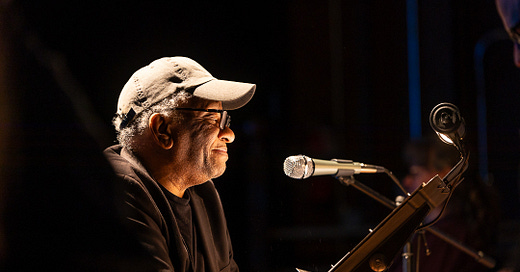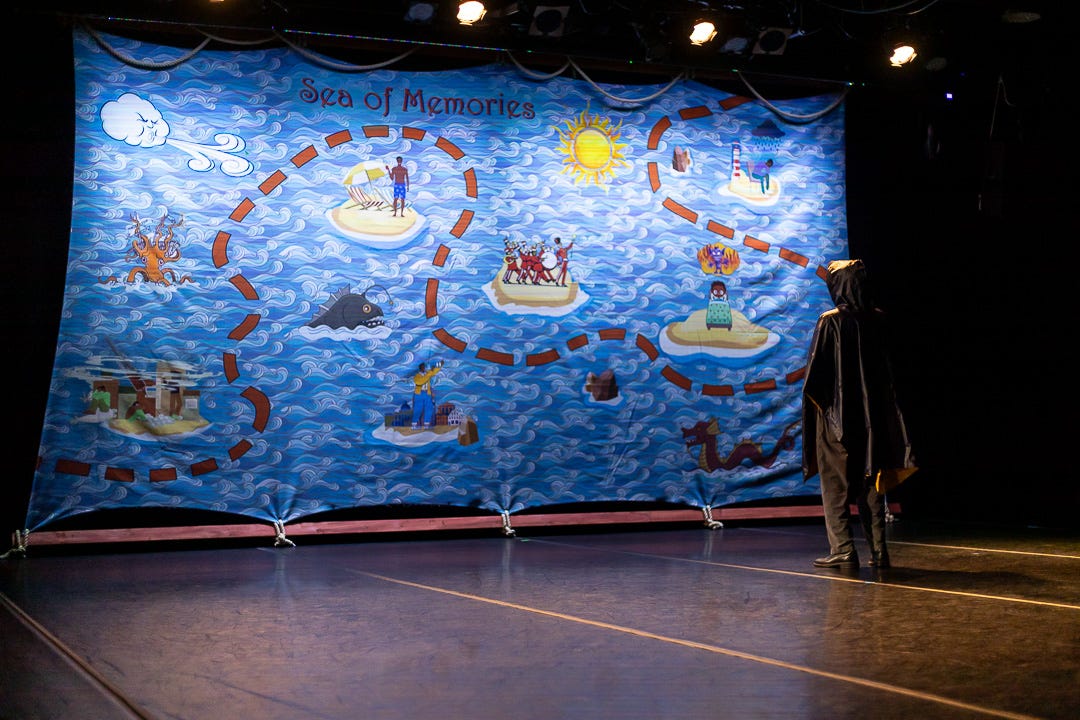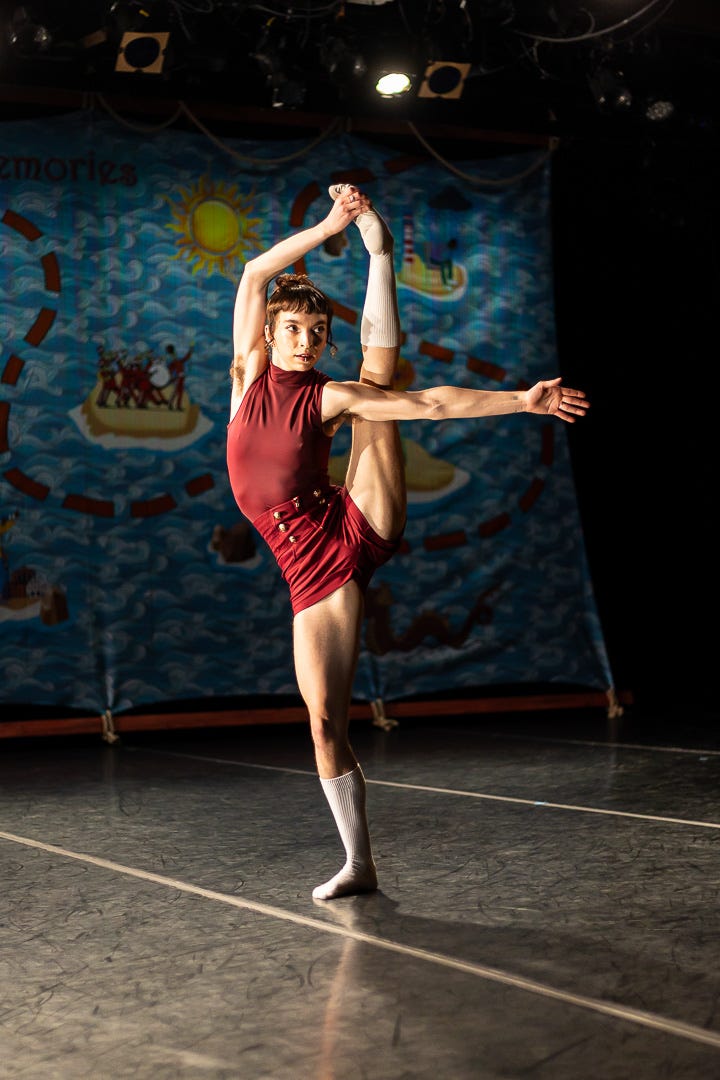
If you’re a Seattle dance fan, you’ve probably heard of choreographer Donald Byrd, the artistic head of Spectrum Dance Theater in the Madrona neighborhood. His work is known around the world as well as locally. In addition to dances he’s created for his own company, Byrd has been commissioned by ballet and opera companies, and he’s won a slew of awards, most recently a fellowship from the Guggenheim Foundation.
He could probably rest comfortably on all those laurels, but as Byrd approaches his 76th birthday this summer, he’s still exploring the parameters of dance, theater, and even literature. His latest evening-length work, Localities/An Odyssey Pt. 1, which had its world premiere May 14 at Spectrum’s Tricia Stromberg Studio Theater, was inspired by the choreographer’s own life as recounted in his unpublished memoir.
The performance starts with Byrd’s childhood in Jim Crow-era Florida, follows him through a short stint at Yale, then to a theater program at Tufts University in Boston. Byrd also studied dance both in and out of college, then moved to New York, where he performed and choreographed before moving first to Los Angeles, then to Seattle.
Several years ago, in the pre-pandemic years, I wrote a long audio story about the choreographer’s life for a national radio show called “Studio 360.” I was familiar with Byrd’s life when I bought my ticket for the premiere of his new memoir-based dance performance, but I wasn’t prepared for the raw honesty and power of Localities.
More a series of vignettes interspersed with Byrd reading sections of his memoir than a narrative dance, Localities features seven Spectrum dancers plus a brief appearance by former Spectrum company member marco farroni leonardo.
The audience is greeted by a large mural featuring islands — the localities — that meander through Byrd’s “sea of memories.” The islands and the series of dance vignettes themselves were inspired by actual events or times in Byrd’s life. While they aren’t exactly narrative, they’re more like tone poems that invoke what I’d call energetic melancholy that permeates Byrd’s life.
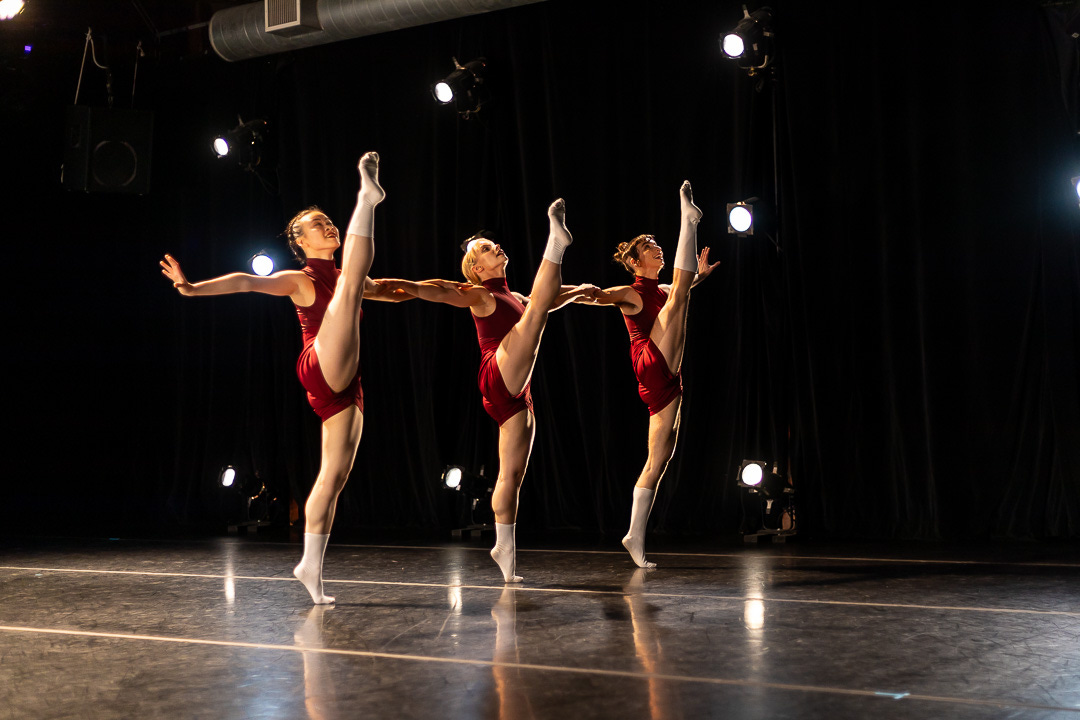
The dancers perform to recorded music by everyone from J.S. Bach to John Adams. I was particularly struck by a percussion composition by an international ensemble called Drums United. It comes fairly early in the performance, accompanying a section about Byrd’s early artistic endeavors. As a young boy he liked to organize the neighborhood and school friends into parade-like public performances. This section was beyond lively: The dancers high-step, kicking their legs and lifting their arms straight into the air. I was struck, as I have been this artistic season, by young dancer Simon Adler, who has the athletic ability to kick, jump and turn nonstop but also the grace to make it compelling rather than simply looking like an athlete thrashing around.
A very new and welcome addition to Spectrum is former Whim W’Him standout Jane Mumford (formerly Cracovaner), who has the stage charisma to grab your attention, whether she’s extending her long limbs to the drum beats or later in the piece, slowly ambulating in a mournful black costume. I’m also captivated by Serene Wong, who has the ability to twist her body into a pretzel, then leap high into the air before landing on the floor in the splits.
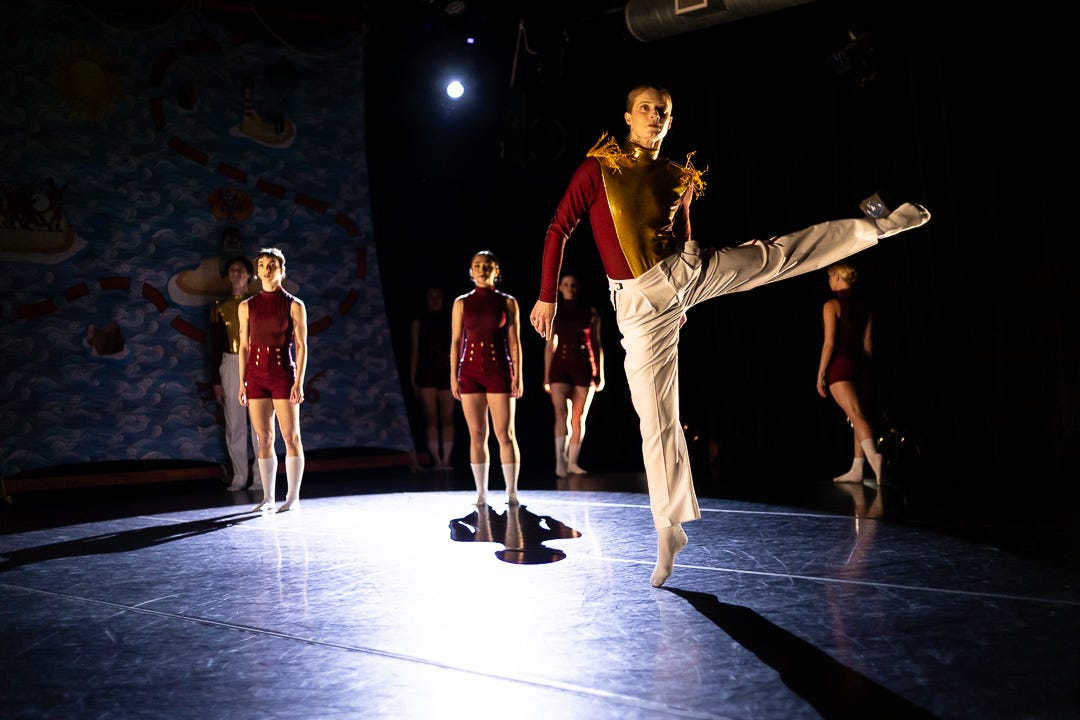
I’ve attended Spectrum performances for more than 20 years, throughout Byrd’s tenure at the company’s helm. Byrd’s dance output has run the gamut from contemporary ballets to short works inspired by Merce Cunningham’s Events, dances he often paired with music that wasn’t written with those specific dances in mind. Localities most resembled in structure Byrd’s 2016 Seattle Repertory Theatre show A Rap on Race, based on conversations between anthropologist Margaret Mead and writer James Baldwin, a theatrical dance performance that attempted to meld Byrd’s longtime artistic pursuits.
While the first act of Localities is highly physical, with the repeating motif of leaping high into the air then collapsing to the floor, the show’s second act is less athletic but more emotionally gripping. It moves through Byrd’s own drug addiction, his artistic ambitions, and his loneliness and anxiety. If the first section showed us the heights to which Byrd aspired, this second half of the show revealed both the literal and inner depths that would eventually land the choreographer at Spectrum in 2002. Leaping and falling, as I wrote in my notebook, highs and lows.

I can’t say that Localities ends on an up-note; at its conclusion Byrd is still living in Southern California, so he hasn’t yet moved to Seattle, where he has been running Spectrum for more than 20 years. This is only part 1, after all.
I’m hoping Byrd will be able to refine the entire piece, parts 1 and 2, in some way that allows it to be seen in a single viewing that isn’t four hours long. I’m also hoping the memoir itself will be published and released to readers before the dance performance.
Byrd is a lyrical writer. Listening to him read from his own manuscript was fascinating, painful and revealing, all at once. Localities/An Odyssey isn’t always easy to watch, but this artist’s self examination and interpretation of both his artistic and private lives is revealing, a rare chance to learn more about an artist’s motivations.
Localities/An Odyssey Pt. 1 runs through Sunday, May 18 at the Tricia Stromberg Studio Theater.


